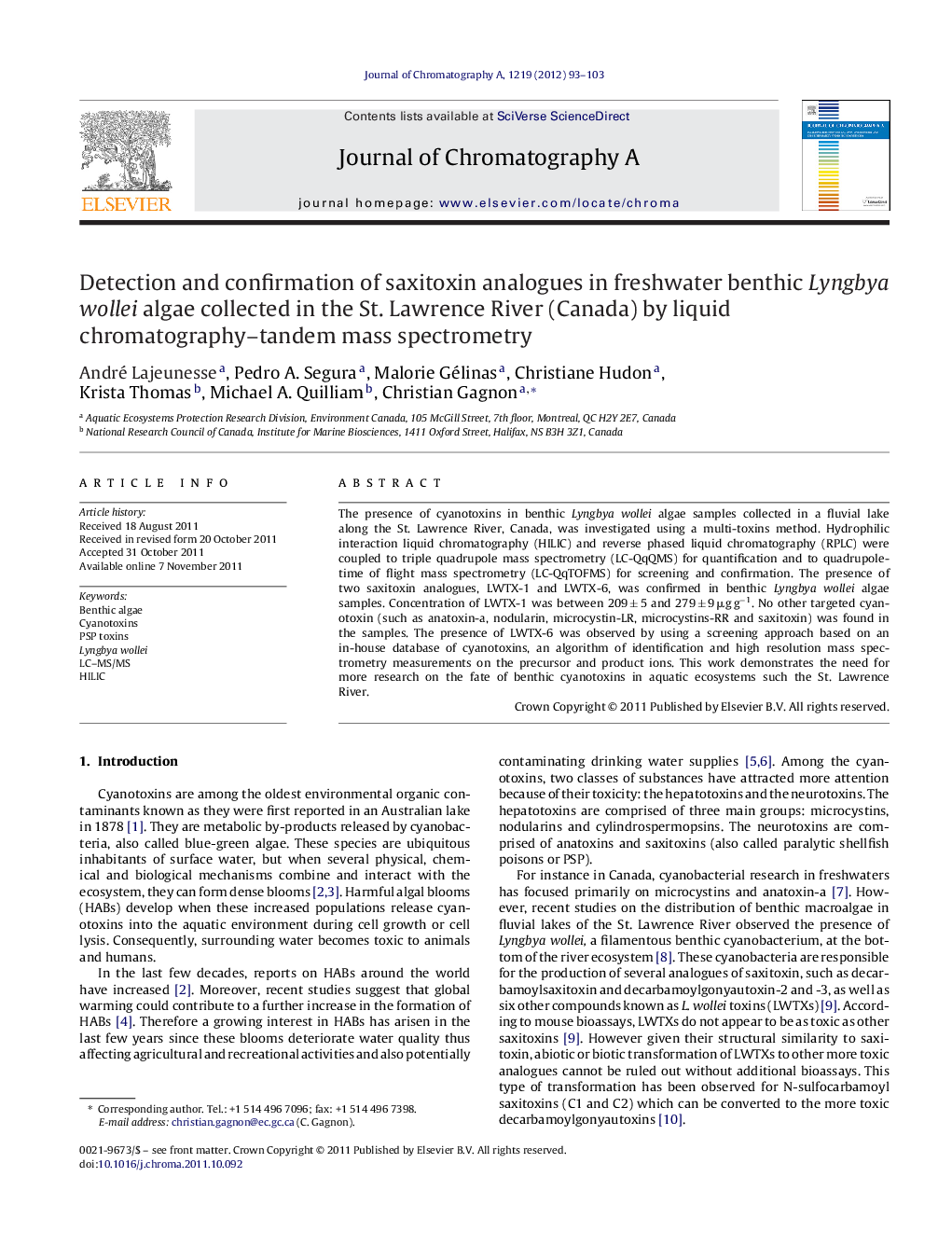| Article ID | Journal | Published Year | Pages | File Type |
|---|---|---|---|---|
| 1202095 | Journal of Chromatography A | 2012 | 11 Pages |
The presence of cyanotoxins in benthic Lyngbya wollei algae samples collected in a fluvial lake along the St. Lawrence River, Canada, was investigated using a multi-toxins method. Hydrophilic interaction liquid chromatography (HILIC) and reverse phased liquid chromatography (RPLC) were coupled to triple quadrupole mass spectrometry (LC-QqQMS) for quantification and to quadrupole-time of flight mass spectrometry (LC-QqTOFMS) for screening and confirmation. The presence of two saxitoxin analogues, LWTX-1 and LWTX-6, was confirmed in benthic Lyngbya wollei algae samples. Concentration of LWTX-1 was between 209 ± 5 and 279 ± 9 μg g−1. No other targeted cyanotoxin (such as anatoxin-a, nodularin, microcystin-LR, microcystins-RR and saxitoxin) was found in the samples. The presence of LWTX-6 was observed by using a screening approach based on an in-house database of cyanotoxins, an algorithm of identification and high resolution mass spectrometry measurements on the precursor and product ions. This work demonstrates the need for more research on the fate of benthic cyanotoxins in aquatic ecosystems such the St. Lawrence River.
► Cyanotoxins were investigated using a new multi-toxins method (two types of chromatographic separation) in benthic Lyngbya wollei algae samples. ► Concentration of LWTX-1 was between 209.4 ± 4.7 and 278.7 ± 8.8 μg/g ► The presence of two saxitoxin analogues, LWTX-1 and LWTX-6, was confirmed in algae samples using quadrupole-time of flight mass spectrometry (LC-QqTOFMS).
